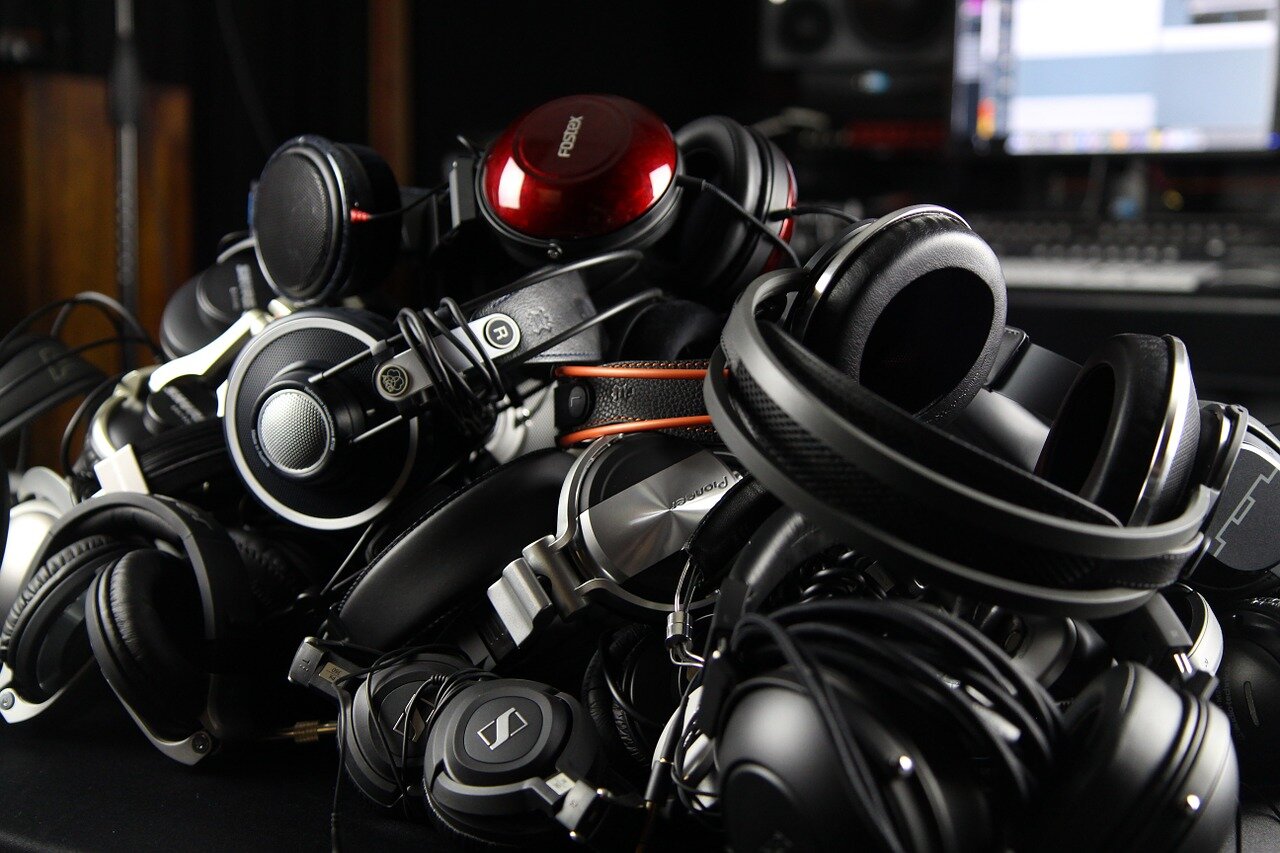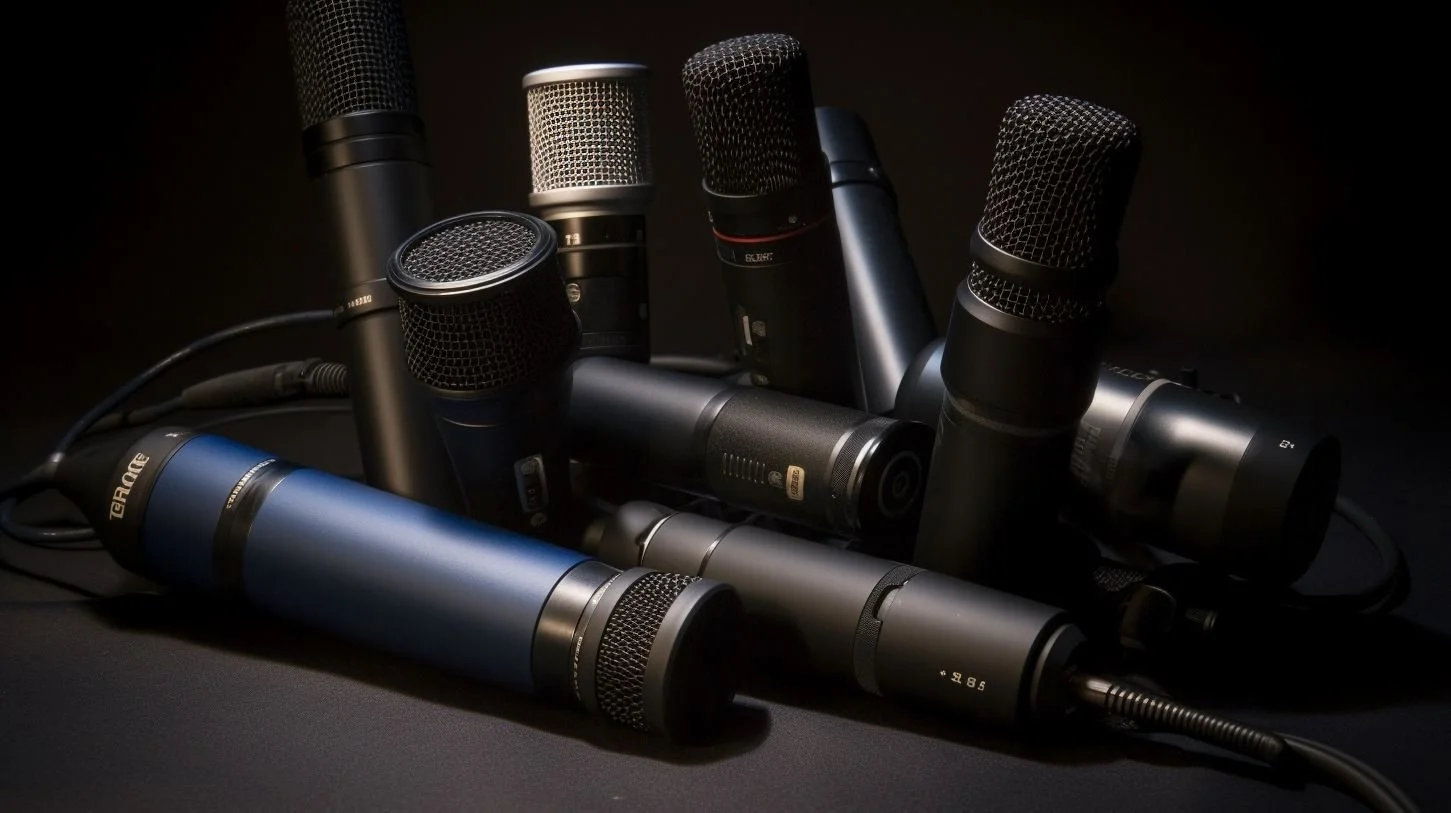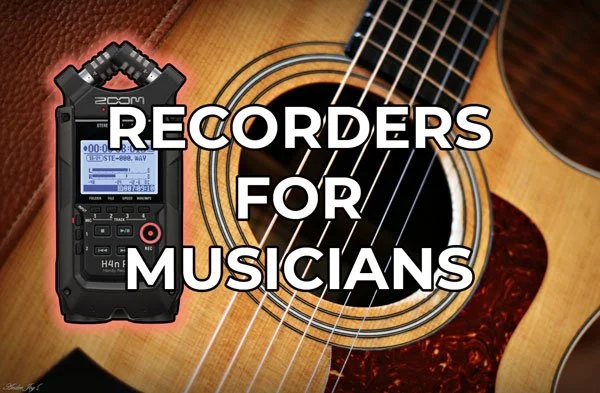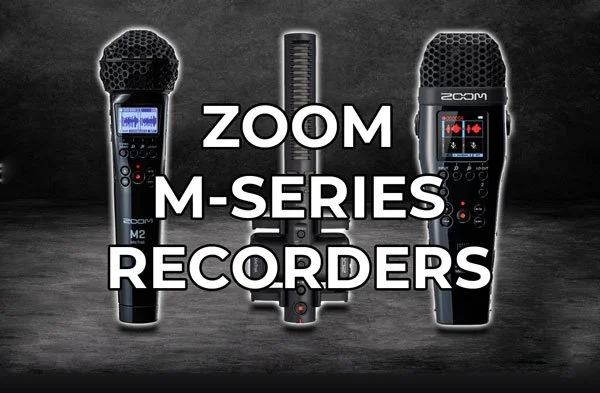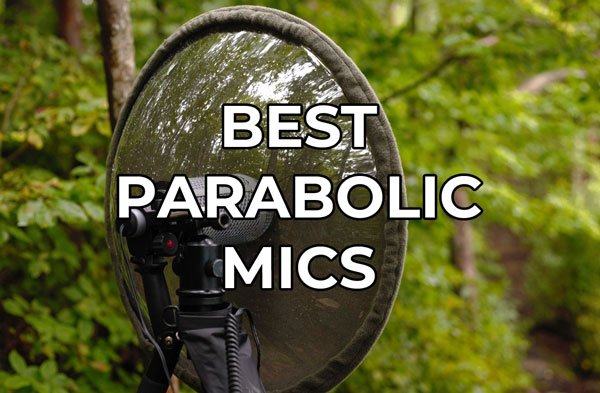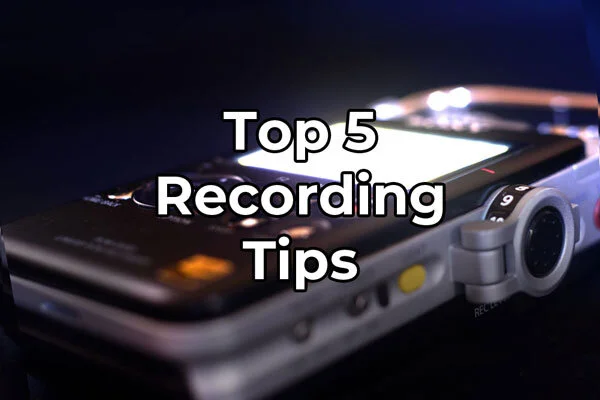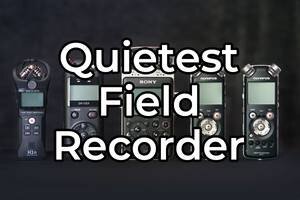Best Headphones for Field Recording
Recently I needed to find the best headphones for myself. Find out what I learned, what I purchased and which pair is best for you in this post.
See the Best Headphones for Field Recording
Is it just me, or are there a lot of cheesy “Top 10” sites out there that don’t care about the product they are recommending?
Most of these websites have zero original content and just slap in an automated list of the 10 best-selling products from Amazon. They use very bright colors and there are buttons everywhere.
When I googled “best headphones for field recording” the entire first page of results were such websites. That motivated me to write this article. As a passionate field recording artist, I did the research myself to find the best headphones specific to our field.
Click here to jump straight to my recommendations or keep reading to educate yourself on important headphone terminology and specifications.
Okay, short rant aside, let’s get into it.
Links on this page are affiliated with Sovrn and Amazon Associates networks.
My Story
Coming home from a field recording trip is exciting. You just can’t wait to get that SD card into your computer and enjoy the sounds of your hard work. But when you start listening, you realize your microphone placement was off, you should have used the low cut filter, and you can hear yourself breathing in the background.
I’ve had all these things happen to me and it is very frustrating to scrap recordings that could have been usable. Using headphones to monitor your recordings can help solve these problems.
Motivated by wanting higher-quality recordings, I recently researched the best headphones for field recording. I learned that there is no perfect model, but there are headphones better suited for different genres of field recording.
I would like to share what I have learned with you so that you can find the perfect headphone for your needs.
The following factors are headphone qualities that you should consider. Depending on your recording style and preferences, some factors may be more or less important to you.
Later in this post I recommend my top headphone picks for specific applications.
If you find this information useful in your headphone pursuit, please use the links on this page to purchase. They are affiliate links and I will receive a small percentage of the total cost. It’s kind of like tipping me, but without having to pay for the tip. Thank you! Now let’s get into it…
Factors to Consider
Noise Isolation: In my opinion, this is the most important factor to consider when shopping for field recording headphones, regardless of what you record. If your headphones do not separate you from your ambient environment, it will be difficult to correctly place and angle your microphones for optimal performance.
Unlike EQ, this cannot be fixed in post-production and is critical to get right in the field. Yes, there are some workarounds, but they fail in comparison to nailing it in the field.
Impedance: Portable field recorders are not the best at powering big headphones with large drivers. That’s what headphone amplifiers are for. For the best performance with portable recorders, select a headphone under 50 ohms (Ω) of impedance.
The short and sweet: headphones with low impedance are easily powered by small devices, resulting in higher-quality, fuller sound.
Compact: Field recording requires some amount of travel. Depending on how much and how intense your travels are, you will require different levels of compactness from your headphones.
I go on backpacking trips to record so I favor small, light weight earbuds, whereas someone traveling from home to studio may opt for larger, over-ear headphones.
Comfort: Seeing that you will wear your headphones every time you record, you want to make sure that they are comfortable. Find what style you like the best: over-ear, on-ear or in-ear.
Generally speaking, over-ear headphones provide the most comfortable fit for long periods of listening.
Accuracy: If you are in need of a headphone to use both in the field and at home for processing, accurate audio reproduction will be more important. Accurate studio monitoring headphones with good noise isolation specs will be your best bet.
What is Headphone Isolation & Why do I Care?
Noise isolation measures a headphone’s ability to mute the ambient sounds of your environment. Good noise isolation allows you to really “zone-in” on your desired sound source with limited/no distractions.
Once you have isolated yourself from your environment, and you can only hear the audio your field recorder is capturing, you can fine-tune you microphone adjustments to get that perfect balance.
Making sure that your subject is spaced correctly between left and right channels can make or break a field recording.
Two Methods of Isolation:
Noise isolation, also called noise attenuation, is measured in decibels (dB) and determines how much quieter a pair of headphones will make your surrounds.
A headphone with an overall isolation rating of -30dB will lower the volume of your surrounds by 30 decibels just by putting them on. In this way, it’s helpful to think of the headphones as earmuffs, muffling the sounds of your outer environment.
This form of isolation is called passive noise isolation; the physical design and materials of a headphone are responsible for blocking ambient sound.
Another isolation method is active noise isolation, which is better known as active noise cancellation. This method uses an external microphone and speaker to actively combat the sounds of your ambient environment.
The microphone “hears” what your environment sounds like and sends that information to the speaker. The speaker then projects the same sound frequencies into your environment but inverts the sound. When two identical frequencies collide, and one is inverted, they actually cancel each other out and become silent. It’s really fascinating but not well-suited for field recording.
When trying to capture pristine audio, it doesn’t make sense to have speakers on your head sending sound into your space. I think the highly sensitive microphones used in field recording could pick up this sound and interfere with your recording.
Additionally, the best active headphones are wireless, requiring a Bluetooth connection, a featured not supported by most field recorders.
Isolation Depends on Frequency
When looking at noise isolation values, it’s important to know that isolation is not the same across all frequencies.
In fact, values listed in the specifications may even be deceiving.
Most headphones do an okay job at blocking higher frequency sounds, but do little to block lower frequencies. Headphones manufactures know this and often use the high frequency isolation values for their marketing purposes.
For example, the popular Sennheiser HD280 has a noise isolation value of -32dB. This rating suggests that your ambient environment will be made quieter by 32 decibels just by wearing the headphones. This is not so.
I wanted to get to the bottom of this and did a lot of research to find the specific noise isolation values for this headphone. I found this fantastic resource with all the information I needed. Here are the actual isolation values for the HD280 as measured by rtings.com:
Bass (20-250Hz): +1.49 dB
Mid (250-2.5kHz): -10.31 dB
High (2.5-20kHz): -29.3 dB
Overall Noise Isolation: -12.36 dB
As you can see, the headphones do not perform as advertised and will only quiet your surroundings by about 12dB.
If you look at the graph depicting how these headphones performed with specific frequencies, you can see the data Audio-Technica used in their advertisement. The M50x decrease 20,480Hz sounds by 32 decibels. Most people cannot even hear this frequency, making this stat even more useless.
How To Measure
Each pair’s isolating capabilities are determined for low, mid and high frequencies in a soundproof box.
The headphones are fitted onto a dummy head with microphones in the ears to “hear” the difference between having the headphones on, and having them off.
A baseline tone is played through a speaker inside the box and the difference is recorded. Each test is done from three different angles and repeated five times to find the overall average. Quite rigorous testing!
I will be using the data from this testing method for the remainder of this article so that you can see the true isolation values for specific frequencies.
What’s Best for You
It may sound counter intuitive, but you want your headphones to isolate (block) the sound of whatever you are recording.
If you are hearing the sound of your subject twice (directly from the source and reproduced through your headphones), it will be impossible to tell exactly what your recording sounds like.
By selecting headphones that block the frequency of your subject, you will only hear what your field recorder is capturing, allowing for fine-tune adjustments.
To help you with this, I’ve compiled a list of commonly recorded sounds and the fundamental frequencies they occupy.
The fundamental frequency of a sound is the loudest frequency of that sound (also called the first harmonic). Sounds occupy many more frequencies than their fundamental but the fundamental is the “root” of a sound.
| Sound | Fundamental Frequency (Hz) |
|---|---|
| Large Caliber Weapon | 50 |
|
Thunder |
145 |
| Vocal (Baritone) | 218 |
| Vocal (Tenor) | 327 |
| Vocal (Alto) | 440 |
| Male Speech | 450 |
| Female Speech | 625 |
| Acoustic Guitar | 740 |
| Vocal (Soprano) | 775 |
| Wind | 1000 |
| Small Caliber Weapon | 1200 |
| Flowing Water | 1200 |
| Flute | 1375 |
| Bird Song | 2000 |
| Piano | 2107 |
| Rain | 3250 |
| Harp | 3515 |
| Cricket | 4000 |
| Cymbal/Hi-Hat | 4000 |
Noise Isolation Summary:
Blocks ambient sound from reaching your ears
Extremely important for proper mic placement
Measured in decibels (dB)
Passive isolation is the way to go for field recording
Not the same across all frequencies
Look at isolation values for specific frequencies
Know what frequency range you most commonly record
Okay, now that you are familiar with the important details headphone shopping details, it’s time to share with you my top picks.
The Best Headphones for Field Recording
Best Overall:
Audio Technica ATH-M50x
The ATH-M50x headphones take the top spot on this list because of their high quality build construction, accurate sound reproduction, and well-rounded noise isolation.
This mix of attributes makes them a great option for both the field and the studio.
Overall Isolation: -11.45 dB
Bass (20-250Hz): +1.05 dB
Mid (250-2.5kHz): -8.71 dB
Treble (2.5-20kHz): -27.52 dB
The ATH-M50x are well-built headphones. The dense plastic used for the ear cups and headband feels sturdy. A metal frame reinforces the headband, adding durability. The detachable cable adds another layer of durability and makes them more packable.
With durability suited for the field, the ATH-M50x are equally suited for the studio, with their accurate sound reproduction. Bass frequency reproduction is very good, with a slight bump around 200Hz. Mid frequency accuracy is near-perfect, and high frequency accuracy is also very good.
Lastly, the M50x headphones provide good noise isolation for positioning microphones and for balancing left and right channel audio.
Pros:
High-quality construction
Accurate sound reproduction
Good noise isolation
38 Ω impedance
3 detachable cables (includes 1.2 m - 3.0 m coiled cable, 3.0 m straight cable and 1.2 m straight cable)
Includes soft pouch
Cons:
Folds down to 5” x 7” x 3.5”
Best Budget Option:
Sony MDR 7506 Professional Headphones
The Sony MDR 7506 headphones provide a great mix of isolation, comfort and accurate sound reproduction.
These features have made them a popular choice for monitoring recordings in the field and are a staple in many field recordists’ bags.
Comfortable to wear for long listening sessions, very accurate and pretty compact for over-ear style headphones, the 7506s have become an industry standard.
Overall Isolation: -11.75 dB
Bass (20-250Hz): +0.53 dB
Mid (250-2.5kHz): -7.14 dB
Treble (2.5-20kHz): -29.17 dB
If you do a lot of post-production work with your field recordings, it’s important to have accurate sound reproduction and comfortable headphones. The Sony MDR 7506 provide both.
Near perfect bass and mid accuracy, good treble performance and large, padded ear cups make these great for the studio.
They won’t be helpful for blocking frequencies below 250Hz, but have good mid isolation and great treble isolation.
Pros:
Accurate sound reproduction
Comfortable, over-ear design
Good mid and treble sound isolation
Folds down to 5” x 5.7” x 2.9” (L/W/H)
Cons:
63 Ω impedance
Cheap construction
Ultra Portable Option
Sony MDR-XB50AP
The MDR-XB50AP earbuds from Sony offer great noise isolation in a small, affordable package.
Overall Isolation: -16.92 dB
Bass (20-250Hz): -1.81 dB
Mid (250-2.5kHz): -15.28 dB
Treble (2.5-20kHz): -34.91 dB
These Sony earbuds won’t block frequencies below 250Hz, but do a great job at isolating you from the rest of the audible spectrum.
These headphones are perfect for the field recordist with gear space at a premium. Occupying just 2.3 cubic inches and weighing only 18 grams, the MDR-XB50AP are portable enough to take anywhere.
You will easily get the most out of these when paired with your field recorder thanks to a super low impedance of 16 Ω.
The Sony earbuds come with a soft pouch, but I recommend getting a hard case for them. A crush-proof case from Pelican for the MDR-XB50AP is available here.
Pros:
Great isolation
Low impedance (16 Ω)
Extremely compact
90° 3.5mm plug
4 silicon tip sizes
Cons:
Not very accurate sound reproduction
“Boomy” sounding bass
Best for Noise Isolation:
TIN Audio T3
The TIN Audio T3 are the best headphones for noise isolation. They can be worn with the cables hanging down, or hooked over your ears.
Overall Isolation: -26.9 dB
Bass (20-250Hz): -8.42 dB
Mid (250-2.5kHz): -22.28 dB
Treble (2.5-20kHz): -51.13 dB
The T3 headphones provide wide spectrum noise isolation, making them good for diverse applications. Although classified as in-ear monitors, they can be worn like normal ear-buds, and include eight different ear tip options. They are well-matched for recording birds, with their impressive, -51.13 dB treble isolation.
Below is a spectrogram image of bird song. This is a good example because there are many species calling. The loudest calls (orange) fall between 1.5-7k Hz. The T3 headphones excel at isolating these frequencies specifically, making them an excellent choice for recording birds.
Spectrogram view of bird songs ranging in frequency from 1.5-8kHz
These headphones do not come with a case, but the previously mentioned Pelican 1010 case is also a great option for the T3 headphones.
Pros:
Great isolation for all frequencies
Low impedance (16 Ω)
8 headphone tip options for comfort and best seal
Durable, metal construction
Replaceable cables
Very compact
Cons:
Does not include case
Straight 3.5mm plug (could be a plus, depending on where your headphone jack is)
“Boomy” sounding bass
Final Thoughts
So, what did I go with?
I selected the Sony MDR-XB50AP earbuds. They will be perfect for isolating the variety of nature sounds I record and are compact enough for my camping and backpacking trips.
For your convenience, all headphones mentioned in this article are listed in the table below ↓
Best Field Recording Headphones:
| Headphone | Overall Isolation | Bass (20-250Hz) | Mid (250-2.5kHz) | Treble (2.5-20kHz) |
|---|---|---|---|---|
| Audio Technica ATH-M50x | -11.45 | +1.05 | -8.71 | -27.52 |
| Sony MDR 7506 | -11.75 | +0.53 | -7.14 | -29.17 |
| Sony MDR XB50AP | -16.92 | -1.81 | -15.28 | -34.91 |
| TIN Audio T3 | -26.9 | -8.42 | -22.28 | -51.13 |
Support Acoustic Nature
If you enjoyed this post and would like to help support Acoustic Nature, please consider "buying me a coffee" or becoming a Patreon with the buttons below.
As a thank you for your support, Patreon supporters receive a copy of Field Recording For Beginners, exclusive access to the full Behind The Sounds video series, nature sound library downloads, and more.
If you are unable to support the site financially, please share this post with others, or leave a comment below letting me know you enjoyed this post! Both are free and help the website grow. Thank you ♫
Thanks for reading,
-Jared

